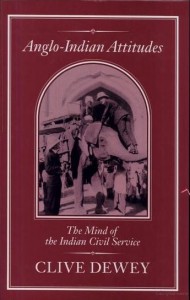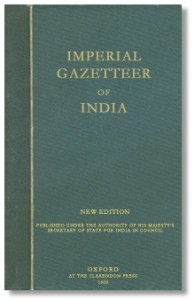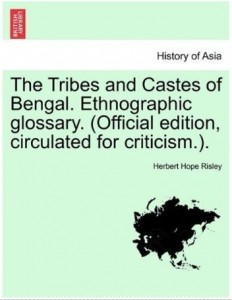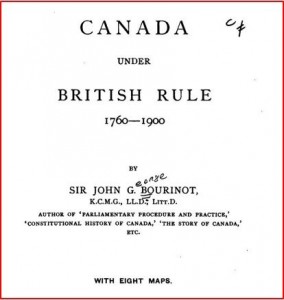I read the book ‘How green was my valley’ three times. The first time, I was in school in Santiniketan. I was mesmerized by the warm hearted and bittersweet story about a Welsh coal mining village of the 1930s by Richard Llewellyn. I was not as familiar with English then. I did my schooling in my mother tongue. And yet, I liked that book a lot because it had made me think. I remember talking about it with my elder sister, who had not read it at the time. After I spoke about it, she too read it. I remember that I was impressed by the Welsh names in that book.
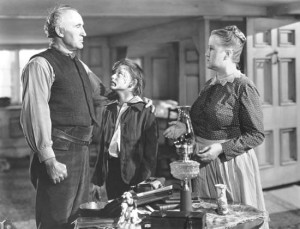
- How green was my valley – the movie
I remember how the main character of the book, Huw, would go to his sister in law Bronwen for advise. He loved the gentle character of Bronwen. I used to play around with that name, rolling it in my tongue and imagining how the Welsh pronounced that name, so it would sound feminine instead of masculine. She vaguely even reminded me of the relationship between Rabindranath Tagore, and his sister-in-law Kadambari devi. I was just catching up those days, about the early years of Rabi, in JoraSanko, and often drew parallels between sets of information that floated my way. So, I tried drawing a comparison, however absurd it might seem, between Bronwen of the novel, from a welsh coal mining village, and the real life character of Kadambari Devi of Jorasanko, Kolkata, before she committed suicide.
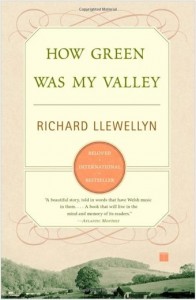
- How green was my valley – the book
Apart from the Welsh names, I got a glimpse of the now vanished life and times in a coal mining village in the western hemisphere. As I grew up, I came to associate that atmosphere in rotation with other regions of the world. It related to the mining towns in Soviet Russia and then to China and on to Africa, particularly southern Africa. And, in the name of progress, a version of it has come to India, with typical Indian versions of the political, social and ecological nastiness.
But, do we have a writer of the same caliber as Richard Llewelyn – someone that can write a book that can be the ‘How green was my valley’ equivalent in India?
I remember reading ‘Gone with the wind’ in school, with its social upheaval relating to a civil war and end of slavery in the US, and immediately connecting it with “Saheb Bibi Golam’ of the vanishing days of Zamindary in eastern India, on the last decade of the 19th century. The Indian story lacked the civil war and the social upheaval. The transition did not perhaps affect the common man too much. But the lazy and oppulent, wasteful life of the fading Zamindars reminded me somehow, with the fast vanishing life of the vain and pompous Southern Plantation owners of the American south. In India, the old lifestyle of people being born into wealth because they agreed to tax the residents for the benefit of the Raja, the Nawab or the British, were soon to disappear. They were to be replaced by a new breed to people that got license to do business by greasing the right palms. Ultimately, the coin was replacing the sword. But then, the coin had always employed the sword.

- Saheb Bibi Golam – by Bimal Mitra
But – I did not find a book comparable to ‘How green was my valley’ with regard to the life and times of miners in India and their families, and expanding that, the general degradation of the land that such mining invariably involved. Even Llewellyn’s book did not touch that issue. Ecological degradation of the landscape was not in people’s radar in the 1930s. It should have been. Had they been conscious about it then, we might not be in the state we are in now. But, I am digressing.
My time in Facebook is going to taper down. The first thing that came to mind while writing about it – was How green was my Facebook. Somehow, I subconsciously connected my departure from Facebook with the main character’s departure from his mining village in that book I read first in my childhood days. And just like the valley, Facebook turned out to be full of fond memories as well as wasteful and sad. That similarity resulted in me rambling for a few pages about that book, about Welsh names, and about mining. And now, I have finally arrived at the root – Facebook and the fact that I need to move on.
Facebook had been a wonderful place when I first got used to it. It was novel, it was like a virtual Kalor Dokan, or a virtual tea stall. Folks from different parts of the world would sit down and yap a little, exchange views and even show off a bit. Every one has a laugh, and then we go home to deal with real life.
And what is real life ?
I have pondered that question, but have not found a reasonable definition. Some would think my real life should be the time spent in the working hours of weekdays, when I am an engineer working for my employer. But I don’t think of that as my real life at all.
Some might consider the time they spend at home with their family as real life. I am tempted to agree with them, but am not sure.
To some, real life is the weekends when they can go and do things that they really love to – such as skiing, or watching soccer, or playing badminton, or, for me, wandering about the foothills of mountains nearby, just watching the scenery, or focusing on birds and clicking their pictures. I just realized I take approximately five hundred times more pictures of landscapes, birds and animals, than I do of humans. This has been the case ever since I got my first good camera, thirty years ago.

So, what is real life? Is it about humans, or birds, or mountains and rivers, or what ?
Whatever it is – it is not Facebook. But, for a long time, it provided an interesting parallel. Man is after all, a social animal Thats what sets us apart. We socialize, we communicate, we exchange views – because we are human.
It was nice to get back in touch with long lost acquaintances. Those were the heady days. At the back of my mind, there was also the wish that we needed to do something with our spare time that related to some form of community work – to give back to the system from which we have taken so much. This ‘system’ could be the school we studied in, the region or the people that we develop an attachment for, or the neighborhood where we live, the wider world, the nature, wildlife – whatever we feel obligated to for making us what we are. Its a token of appreciation and an effort to see that the ‘system’ will survive and thrive after we ourselves are gone. Humans developed not only communication skills, but also the notion of altruism. No?
It came from the general and fundamental understanding that systems need support, and the best support is one that comes from bottom up, rather than top down from the Government or politicians. It may be a wrong perception – but that was my perception and it stayed with me over the years.
Anyhow, Facebook, along with bulletin boards, blogs and such, became also an avenue to see if we could do something to support the vision of Tagore. Subconsciously, FB became a vehicle of sorts. But that was then, and I was more hopeful than wise.
It also became a vehicle of creative outlet. I doubt I would have penned as many cranky verses, “ছড়া”, as I eventually wrote, had it not been for Facebook. But, that was then, too.
Somewhere down the line, Facebook became just a thing one gets used to, and perhaps a bit hooked too as well – like a cup of coffee in the morning. It gets addictive.
We made many good friends through FB. But, along with that, we also accumulated junk. We saw more junk, we processed more junk, and we created more junk. By junk, I mean instantaneous flash in the pan that lasts a day, two days, or a week, but after that becomes part of the rising tide of background noise. This background tide of noise can, eventually, become deafening. I needed to get away, and look at it from another perspective. I needed to turn the volume down. I needed social ear plugs.
I had too many acquaintances on Facebook – way more than my brain or my time could reasonably deal with on a personal one to one level. So the question came, do I need the notion of having so many friends that I shall perhaps never exchange anything personal with? Do I need five or six people to like what I write so much, that I must advertise my thoughts and deeds to hundreds of people?
Our past is a great thing to remember. But there is one thing about the past – it is in the past. Not all things from the past will survive. I shall always have close and dear ones from the past – but, I should not need five hundred silent friends on Facebook just to keep in touch with a half dozen. There surely should be a better way.
Facebook is less green today. It is turning brown at the edges. Its details are beginning to fade. Also, as I get older, I find this platform more for the youngsters that have the time in their hand, and the interest in small items of their daily life. For them, it is perhaps the essence of catching up with the community. For me, it increasingly looks like a barrage of trivia that I do not want to know.
But, I cannot leave Facebook completely, just like Richard Llewellyn the writer could not quite leave his Welsh homeland, even as the main character prepared to leave that land for good.
Facebook, like the google forum on Santiniketan, like the “Santiniketaner Khata” blog I used to run, or the Uttarayan bulletin board, just like the podcast – they will remain fond memories and we shall retain contact with it, albeit from a distance. Distance is not bad per se. It shows us perspective. Distance is three dimensional.
I am not leaving it completely also because there are folks on this platform that I value, and who I would like to continue interacting with in future.
Somnath Mukherjee – for his sheer dedication and selflessness in community service towards the downtrodden Indians, and for being such an inspirational person.
Madhusree Mukherjee – for reminding me that taking up science as a profession should not make one uncaring about civic society and ecology.
Felix Padel – for reminding me that even trained economists can be caring ecologists.
Tathagata Sengupta – for being a smaller version of Somnath and growing up to equal him.
Edward Lee Durgan – for joining up with us for “Free Binayak Sen” March, after listening to me just for a half hour about Sen, and for his world view and firm commitment to principles that are so rare to find these days.
Ashley Zarbatany of Social Justice Group of the University of British Columbia – the second person that joined up on the Free Binayak Sen March in Vancvouer, who took the mike and spoke to the crowd. Although I have not had much interaction with her, I have watched her involvement with more issues of social justice. Folks like her help keep my faith in humanity alive.
Susan Bibbs of downtown Vancouver. She showed me what it meant to be a bleeding heart liberal of British Columbia – ha ha.
Ashie Hirji, the Ismaili rebel that read the Veda and practiced yoga, the entrepreneur, feminist, social reformer, secular and whacky, of downtown Vancouver of the past and of Europe of present – for just being herself.
Subin Das – because I was once with him in college, because he know and spent time with my father when I was half a world away, and because of his perception of the world.
Pradip Malhotra – as the only person I know and spoke with on phone while he spent months on the Antarctic, not to mention being a great guy.
Lokendranath Roychowdhury – for being so intelligent, articulate and observant.
Chira, Barsan, Sujoy, Sandeep and others who, like Madhusree, live in the west, are from cutting edge Science and yet do such a wonderful job of maintaining social awareness, and compassion for the world. You may not know it, but you all have influenced my views on the balance between technological progression and regression, and the balancing acts between new versus old and good versus bad. I hope to find some of you in google + too.
Bhaiya, Kukul, Tukul, Moni and so many others – for being my relatives and friends – who I shared my past with, and hope to share part of my future with too.
Tapas da, Tukul, Piyali – the trio that, along with me, formed at one time the quadrangle of Santiniketan ex-students that existed on conference calls, on Facebook, on Uttarayan, and physically in Santiniketan as well as even here in Canada when some of them would come to visit. I shall always remember the great time we had, speaking with each other and rattling off. I even have recordings of most of it.
Then there are my many friends from Santiniketan – that I share a great memory with.
Ravi Dwivedi – because of the size of the lens on his avatar – ha ha.
And then there is Debal Deb, one of the few that stand tall in my view for wanting to buck the trend of globalized and corporatist food industry where indigenous strains of food are to be destroyed and replaced by genetically modified and patented food that will feed those that can afford to pay, and same time enrich the patent holder, and where the hungry will no more have the choice in selecting what kind of food he likes to eat. He, Vandana Shiva and others like them that defy the corporate Goliath and their cohorts in the Governments and decide to preserve indigenous seeds when no one else will – so a small slice of our biodiversity may still survive the onslaught of “economic progress”. But, he is moving out of Facebook and on to google+. So he did not really deserve a mention here. But then, I am a human and not a computer. I make mistakes.
All my local friends from Greater Vancouver area.
And many many others that I came across.
My thanks to you all .. You will see me here, but not that often.
I shall be more present in google+ as a social network site. Its easier for me to find folks and events that I like to keep track of. But even there, my presence may not be high. Any of you that have a gmail account can find me there. I am not even sure if it requires a gmail address. Anyhow, mine is tony.mitra@gmail.com
Other than that, any important message that is just for me – pls send an email. I tend to ignore mass emails since there are so many that come my way. An interesting statistics of the quality of our communication against quantity – out of 100 emails in my inbox, usually there are only two that are directly addressed to me by someone I know. The rest – are just floating debris.
Those that have an interest in catching up on my random thoughts and musings and creative writings, – well, there used to be bulletin boards, multiple blogs as well as podcasts, each carrying volumes of stuff written and talked over the past so many years. But I am winding them all down.
I shall only concentrate on one site, and write only what pleases me, irrespective of if it pleases readers. I do not aim to make money out of it and so I do not need to follow convention and formula. You can find that in www.tonu.org.
And so, here I am, starting with how I first read the book ‘How green was my valley’ and ending here, on a blog, writing how green my Facebook was.
Be good, everyone.
It was nice.














